Introduction: The Power of Agile Ceremonies and Artifacts
Agile methodologies have revolutionized project management by emphasizing collaboration, adaptability, and continuous improvement. At the heart of Agile success lie ceremonies (events) and artifacts (tools) that structure workflows, enhance transparency, and drive efficiency.
At Apstax Solutions, we help businesses master Agile processes to achieve faster delivery, higher quality, and improved stakeholder satisfaction.
This 2,000-word guide explores:
✔ The 4 Key Agile Ceremonies (Sprint Planning, Daily Standups, Sprint Review, Retrospective)
✔ Essential Agile Artifacts (Product Backlog, Burndown Charts, Sprint Backlog)
✔ Best Practices for Implementation
✔ Real-World Case Studies
By the end, you’ll understand how to leverage Agile ceremonies and artifacts for optimal team performance.
1. Agile Ceremonies: Structured Events for Success
Agile ceremonies are time-boxed meetings that ensure alignment, transparency, and continuous improvement.
1. Sprint Planning: Setting the Stage for Success
Definition: A collaborative session where the team defines what work will be done in the upcoming sprint.
Key Components:
| Component | Purpose | Best Practices |
|---|---|---|
| Backlog Grooming | Refine & prioritize user stories | Ensure stories are clear, estimated, and ready |
| Story Point Estimation | Assess effort using Fibonacci sequence (1, 2, 3, 5, 8, 13) | Use Planning Poker for accuracy |
| Sprint Goal Setting | Define a measurable objective (e.g., “Improve checkout speed by 20%”) | Keep it aligned with business priorities |
Why It Matters:
- Ensures team commitment
- Prevents scope creep
- Aligns work with customer needs
2. Daily Standups: Keeping the Team Aligned
Definition: A 15-minute meeting where team members sync on progress and blockers.
The 3 Key Questions:
- What did you accomplish yesterday?
- What are you working on today?
- Are there any blockers?
Best Practices:
✔ Stand up! (Encourages brevity)
✔ Time-box to 15 mins
✔ Solve blockers offline
Why It Matters:
- Improves transparency
- Identifies roadblocks early
- Boosts accountability
3. Sprint Review: Showcasing Deliverables
Definition: A demo meeting where the team presents completed work to stakeholders.
Key Components:
✅ Demo of Completed Work – Show functional features
✅ Stakeholder Feedback – Gather input for improvements
✅ Review of Sprint Goals – Assess if objectives were met
Why It Matters:
- Validates progress with real users
- Ensures business alignment
- Builds stakeholder trust
4. Sprint Retrospective: Continuous Improvement
Definition: A reflection meeting to assess what worked and what didn’t.
Key Discussion Points:
✔ What went well?
✔ What could be improved?
✔ Action items for next sprint
Best Practices:
- Use Start-Stop-Continue technique
- Focus on process, not people
- Assign action owners
Why It Matters:
- Drives continuous improvement
- Boosts team morale
- Prevents recurring issues
2. Agile Artifacts: Tools for Transparency
Agile artifacts are visual tools that track progress and guide decision-making.
1. Product Backlog: The Single Source of Truth
Definition: A prioritized list of features, bugs, and technical tasks.
Key Components:
✔ User Stories (e.g., “As a user, I want to filter products by price”)
✔ Acceptance Criteria (Defines “Done”)
✔ Priority Ranking (MoSCoW Method: Must-have, Should-have, Could-have, Won’t-have)
Best Practices:
- Refine weekly
- Keep stories small (1-3 days effort)
- Involve stakeholders
2. Sprint Backlog: The Team’s Commitment
Definition: A subset of the Product Backlog selected for a sprint.
Key Components:
✔ Sprint Goal
✔ Task Breakdown (e.g., “Design UI → Develop API → Test Feature”)
✔ Assigned Owners
Why It Matters:
- Clarifies team focus
- Tracks progress via Burndown Charts
3. Burndown Charts: Visualizing Progress
Definition: A graph showing work remaining vs. time.
Key Insights:
📉 Ideal Line (Planned progress)
📊 Actual Line (Real progress)
Why It Matters:
- Identifies delays early
- Helps adjust workload
3. Best Practices for Agile Success
1. Keep Ceremonies Focused
- Sprint Planning: Max 2 hours/week
- Retrospectives: 45-60 mins
2. Use the Right Tools
- Jira (Backlog management)
- Trello (Kanban boards)
- Confluence (Documentation)
3. Foster Psychological Safety
- Encourage open feedback
- Celebrate failures as learning opportunities
4. Real-World Case Studies
Case Study 1: Spotify’s Agile Ceremonies
- Challenge: Scaling Agile for 1,500+ engineers
- Solution: Squad-level standups + Tribe-wide syncs
- Result: 30% faster feature releases
Case Study 2: Apstax’s Government Agile Transformation
- Challenge: A federal agency’s slow procurement process
- Solution: Bi-weekly Sprints + Daily Standups
- Result: 40% reduction in project delays
Conclusion: Mastering Agile for Business Agility
Agile ceremonies and artifacts structure collaboration, enhance visibility, and drive results. By implementing:
✔ Sprint Planning (Clear goals)
✔ Daily Standups (Alignment)
✔ Reviews & Retrospectives (Continuous improvement)
✔ Backlogs & Burndown Charts (Transparency)
…your team can deliver faster, adapt smarter, and innovate continuously.
🚀 Need Agile coaching? Apstax Solutions provides end-to-end Agile transformation.
📞 Call (614)-434-6655 or email david@goapstaxsolutions.com today!
FAQs: Agile Ceremonies & Artifacts Explained
1. Can we skip Daily Standups if work is on track?
No! Standups prevent silos—even when work seems smooth.
2. How often should we refine the Product Backlog?
Weekly refinement ensures stories are ready for Sprint Planning.
3. What if Burndown Charts show delays?
- Re-prioritize tasks
- Address blockers
- Adjust scope if needed
4. Are Agile ceremonies only for software teams?
No! Marketing, HR, and operations teams also benefit.
5. How does Apstax Solutions help with Agile adoption?
We offer:
✔ Agile training & certifications
✔ Scrum/Kanban implementation
✔ Ongoing coaching
Transform Your Workflow with Agile
Whether you’re a startup, enterprise, or government agency, Apstax Solutions can guide your Agile journey.
📞 Call (614)-434-6655 or email david@goapstaxsolutions.com to get started!






